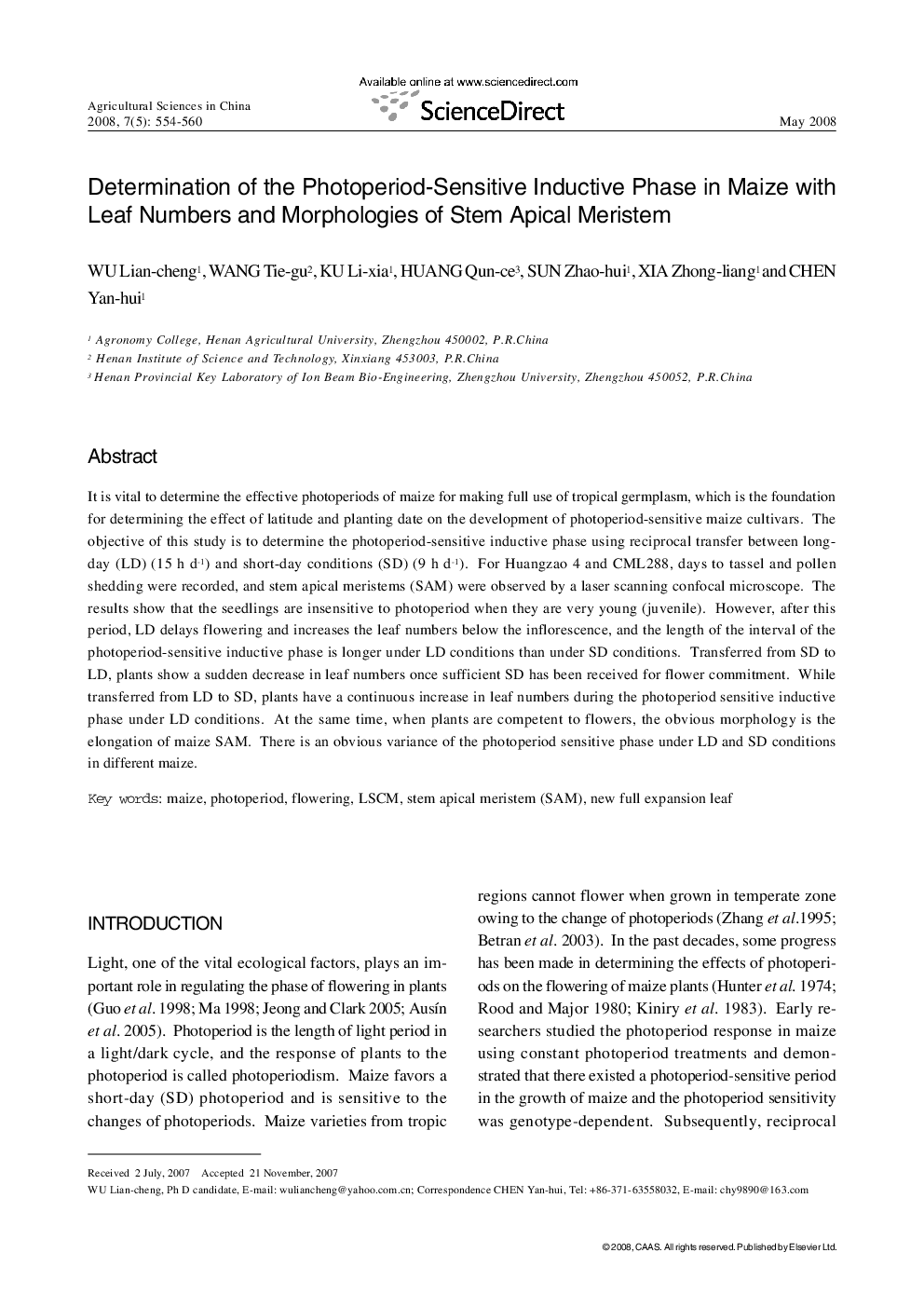| Article ID | Journal | Published Year | Pages | File Type |
|---|---|---|---|---|
| 4490686 | Agricultural Sciences in China | 2008 | 7 Pages |
It is vital to determine the effective photoperiods of maize for making full use of tropical germplasm, which is the foundation for determining the effect of latitude and planting date on the development of photoperiod-sensitive maize cultivars. The objective of this study is to determine the photoperiod-sensitive inductive phase using reciprocal transfer between long-day (LD) (15 h d-1) and short-day conditions (SD) (9 h d-1). For Huangzao 4 and CML288, days to tassel and pollen shedding were recorded, and stem apical meristems (SAM) were observed by a laser scanning confocal microscope. The results show that the seedlings are insensitive to photoperiod when they are very young (juvenile). However, after this period, LD delays flowering and increases the leaf numbers below the inflorescence, and the length of the interval of the photoperiod-sensitive inductive phase is longer under LD conditions than under SD conditions. Transferred from SD to LD, plants show a sudden decrease in leaf numbers once sufficient SD has been received for flower commitment. While transferred from LD to SD, plants have a continuous increase in leaf numbers during the photoperiod sensitive inductive phase under LD conditions. At the same time, when plants are competent to flowers, the obvious morphology is the elongation of maize SAM. There is an obvious variance of the photoperiod sensitive phase under LD and SD conditions in different maize.
